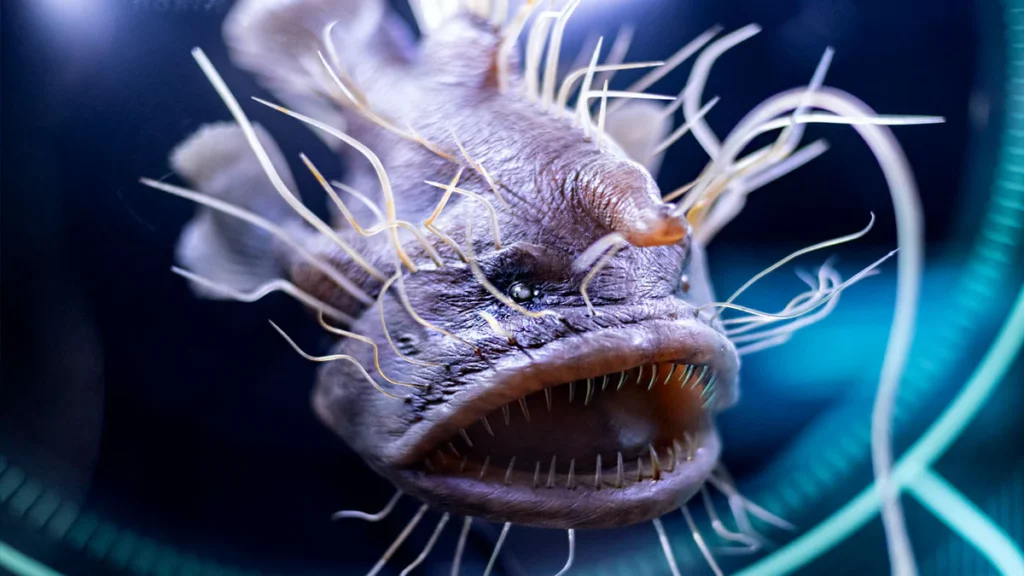Are you ready to delve into the eerie and spine-chilling world of the most scary and creepy animals? Brace yourself as we take you on a thrilling journey through the dark corners of the animal kingdom.
From reptiles with prehistoric appearances to insects with venomous stings, from fish with razor-sharp teeth to primates with bizarre adaptations, and from arachnids with nightmarish appearances to birds with haunting calls, prepare to encounter a diverse range of creatures that will send shivers down your spine.
Key Takeaways
- There are a variety of scary and creepy animals in the world, including reptiles, insects, fish, primates, arachnids, birds, marine creatures, and miscellaneous creatures.
- Some examples of scary and creepy animals include the alligator snapping turtle, Asian giant hornet, stonefish, aye-aye, black widow spider, shoebill, box jellyfish, electric eel, and textile cone snail.
- These animals possess unique and eerie characteristics such as prehistoric appearances, venomous bites or stings, specialized feeding behaviors, adaptations for survival in extreme environments, and unusual physical features.
- Many of these animals are known for their terrifying abilities, such as the alligator snapping turtle’s ability to bite off fingers, the bullet ant’s excruciating sting likened to being shot, and the vampire bat’s blood-eating habit.
Reptiles
Reptiles are among the most scary and creepy animals in the world. With their unique characteristics and ancient lineage, they captivate the imagination. One fascinating aspect of reptiles is their unusual defense mechanisms.
Some reptiles, like the alligator snapping turtle, possess a prehistoric appearance and are known to bite baby alligators. In fact, they’ve been known to bite off researchers’ fingers. Another reptile with a distinctive defense mechanism is the gharial, a crocodilian with a narrow, elongated snout and sharp, interlocking teeth. These reptiles live in the rivers of the Indian subcontinent and use their teeth to capture their prey.
When it comes to prehistoric reptiles and their modern-day counterparts, there are intriguing comparisons to be made. Certain reptiles, such as the alligator snapping turtle, have a striking resemblance to their prehistoric relatives. Their armored shells and powerful jaws harken back to a time when dinosaurs roamed the Earth. Similarly, the gharial, with its long snout, is reminiscent of ancient crocodilians. These modern-day reptiles serve as a living link to the past, providing us with a glimpse into the prehistoric world.
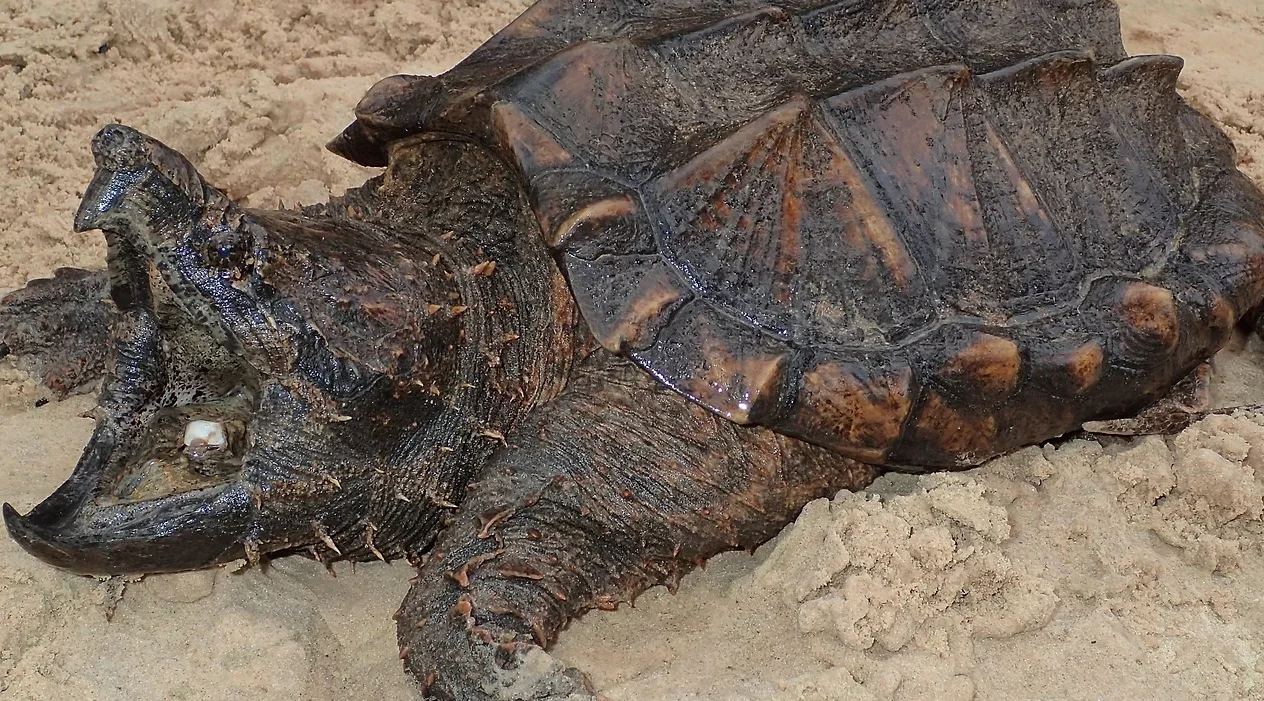
Insects
Insects, on the other hand, have their own unique characteristics that make them some of the most scary and creepy animals in the world. These creatures may be small in size, but they possess unusual defense mechanisms that can send shivers down your spine. Let’s take a closer look at some of these terrifying insects in the table below:
| Insect Name | Unusual Defense Mechanism |
|---|---|
| Asian Giant Hornet | Releases pheromones to call for backup and attack intruders in large groups |
| Bullet Ant | Inflicts a sting that causes excruciating pain, often compared to being shot |
| Vinegaroon | Shoots acid from its posterior as a defense mechanism |
| Walking Stick Insect | Mimics the appearance of twigs or leaves to blend in with its surroundings |
In addition to their frightening defense mechanisms, insects play a crucial role in maintaining ecosystem balance. They serve as pollinators, helping to fertilize plants and ensure their reproduction. Without insects like bees and butterflies, many plants would struggle to reproduce and maintain their populations. Insects also act as decomposers, breaking down organic matter and recycling nutrients back into the soil. This process is essential for the nutrient cycling in ecosystems, allowing other organisms to thrive. So, while insects may give us the creeps, we should appreciate the vital role they play in maintaining the delicate balance of our ecosystems.
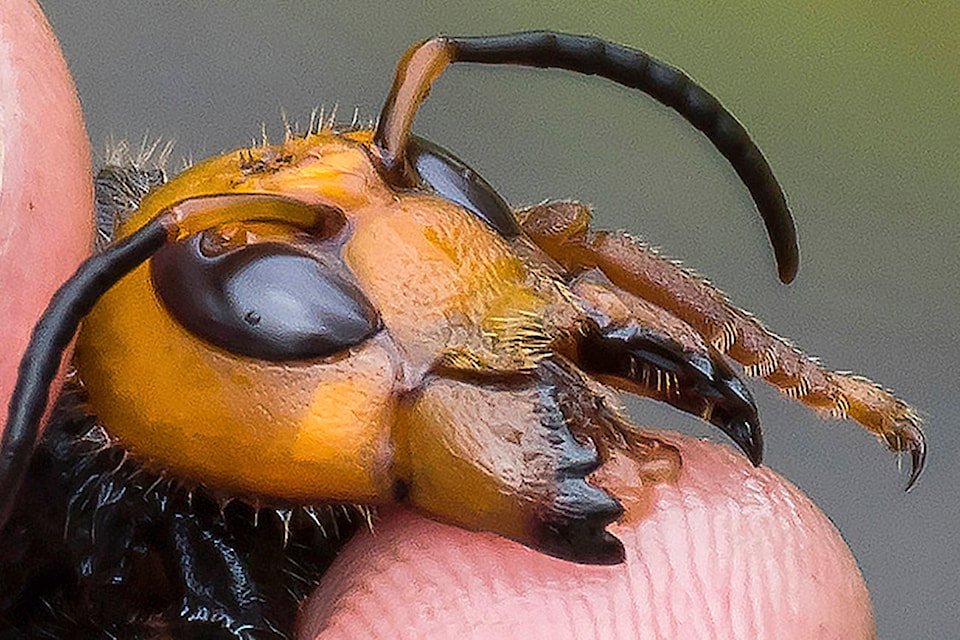
Fish
Now let’s dive into the world of fish, where you’ll encounter some of the most terrifying and eerie creatures on the planet. In the depths of the ocean, fish have developed remarkable adaptations to survive the extreme conditions of the deep sea. These deep sea adaptations in fish include bioluminescence, elongated bodies, and large mouths to capture prey in the darkness.
But not all fish in the ocean are just strange-looking, some are also venomous and pose a danger to humans. Venomous marine creatures include the Stonefish, known as the most venomous fish in the world. With its ability to blend in with the seafloor, it’s often stepped on, leading to an excruciatingly painful sting. Additionally, the Fangtooth, a deep-sea fish found at depths up to 5,000 meters, possesses the largest relative teeth to its size in the ocean. While not venomous, its spooky appearance and unique adaptation for survival in the deep sea make it a creepy sight to behold.
In the world of fish, the deep sea adaptations and venomous marine creatures combine to create a truly eerie and terrifying realm. Exploring the depths of the ocean reveals a hidden world of strange and dangerous fish that will send shivers down your spine.
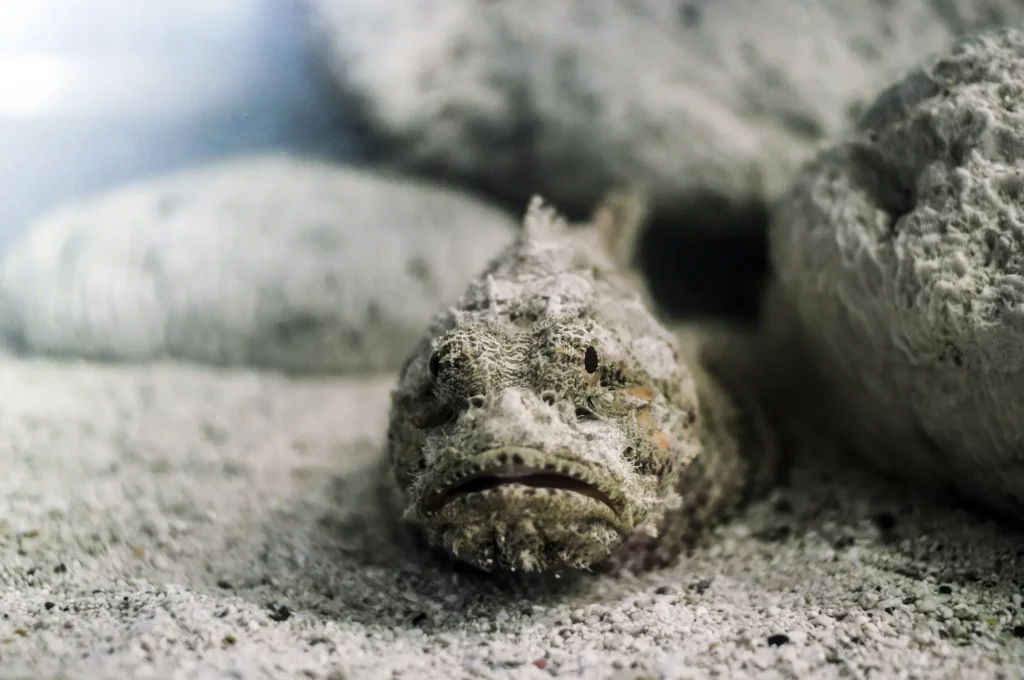
Primates
Let’s explore the fascinating world of primates and their scary and creepy characteristics.
One intriguing aspect of primates is their ability to adapt to nocturnal environments. With their keen senses and specialized adaptations, they navigate the darkness with ease, making them mysterious and eerie creatures of the night.
Additionally, primates showcase unique feeding behaviors, ranging from drinking the blood of other birds to having rodent-like teeth that grow perpetually. These distinct feeding strategies add to the eerie allure of these incredible creatures.
Nocturnal Adaptations in Primates
Explore the fascinating world of primates and their remarkable adaptations for thriving in the darkness of night.
- Nocturnal communication methods in primates: Nocturnal primates have developed specialized vocalizations and calls to communicate in the darkness. These calls can range from low-frequency hoots to high-pitched screams, allowing them to navigate and locate each other in the dark.
- Enhanced night vision: Primates such as tarsiers and owl monkeys have evolved large eyes and a reflective layer behind their retinas called the tapetum lucidum. This adaptation allows them to gather more light, enhancing their night vision.
- Acute hearing: Many nocturnal primates have highly sensitive ears that can detect even the slightest sound. This helps them locate prey, communicate with their group members, and avoid predators.
- Stealthy movements: Nocturnal primates have developed a keen sense of balance and agility, allowing them to move silently through the darkness. Their ability to jump, climb, and swing from branch to branch enables them to navigate their environment without being detected.
- Enhanced sense of smell: Some nocturnal primates, such as lemurs, rely on their sense of smell to locate food and communicate with other members of their group. Their well-developed olfactory system helps them navigate their environment and locate potential mates or predators.
These adaptations provide evolutionary advantages for primates that inhabit the night, allowing them to efficiently forage for food, avoid predators, and communicate with their group members in the darkness.
Unique Feeding Behaviors of Primates
The unique feeding behaviors of primates offer fascinating insights into their evolutionary adaptations and dietary preferences.
One intriguing feeding behavior observed in some primates is nocturnal foraging. Certain species, such as the Aye-Aye, have adapted to primarily feed at night when competition for food is reduced and they can exploit resources that aren’t available during the day.
Another remarkable feeding behavior is the blood drinking adaptation seen in the Vampire Ground Finch. Found on the Galapagos Islands, this finch has developed a specialized diet of drinking the blood of other birds. This unique and specialized feeding behavior provides the finch with a reliable source of nutrients in an otherwise resource-scarce environment.
Through these feeding behaviors, primates have successfully adapted to their habitats, highlighting the diverse strategies they employ to meet their dietary needs.
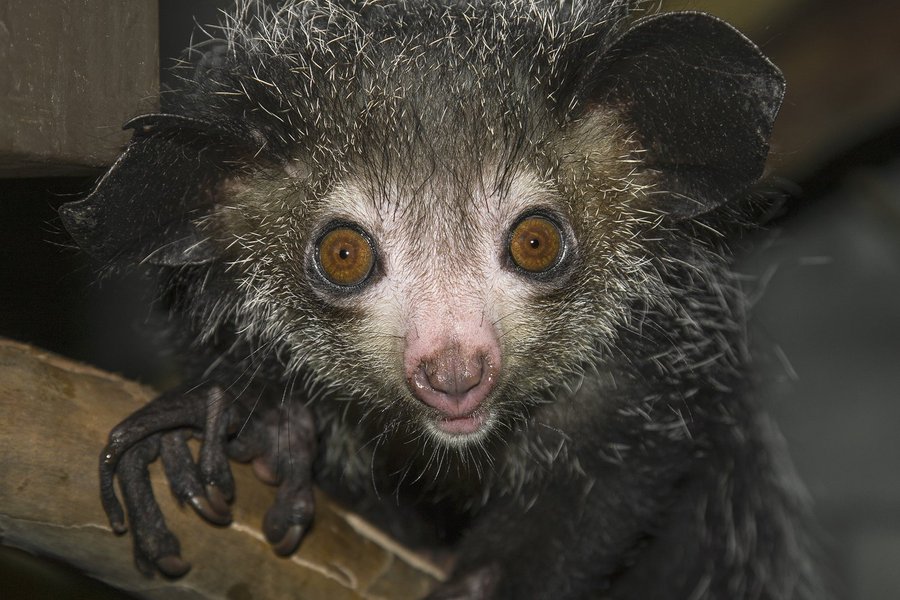
Arachnids
Prepare yourself for the spine-chilling world of arachnids, where fear and fascination intertwine. Arachnids are a diverse group of creatures, known for their unique defense mechanisms and intriguing adaptations for survival.
Here are five examples that will leave you in awe:
- Scorpion: With their intimidating pincers and venomous stinger, scorpions have evolved an extraordinary defense system. Their venom, injected through the stinger, immobilizes prey and acts as a potent deterrent against predators.
- Tarantula: These large, hairy spiders possess urticating hairs on their abdomens, which they can flick as a defense mechanism. These barbed hairs cause irritation and can be released in clouds, creating a barrier between the tarantula and potential threats.
- Camel Spider: Despite their name, camel spiders aren’t true spiders but belong to a separate order. These arachnids have developed incredible speed and agility to capture prey and escape danger. They can run up to 10 miles per hour, making them formidable hunters.
- Tailless Whip Scorpion: Despite its terrifying appearance, the tailless whip scorpion is harmless to humans. Its unique adaptation lies in the absence of venomous jaws or a stinger. Instead, it relies on its elongated front legs to seize prey and defend itself from predators.
- Vinegaroon: This ancient arachnid possesses a spider-like face, scorpion-like limbs, and a whip-like tail. As a defense mechanism, it can shoot a vinegar-like acid from its posterior, deterring predators and potentially blinding them.
These arachnids showcase the incredible diversity of adaptations and defense mechanisms found within this eerie and fascinating group of animals.
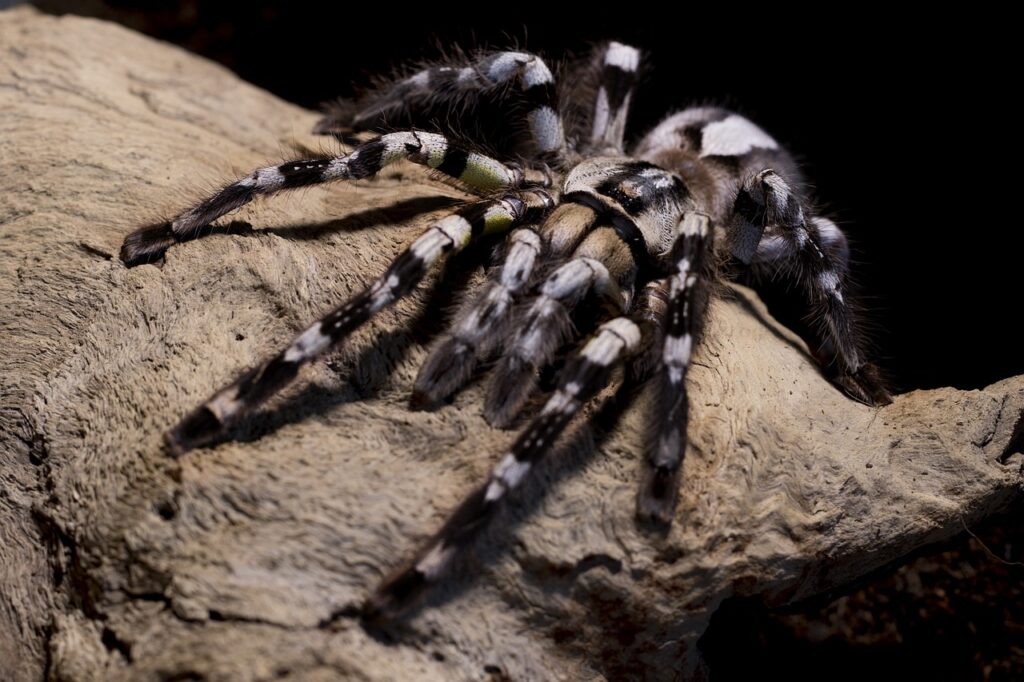
Birds
Continuing the exploration of the spine-chilling world of animals, birds bring their own unique blend of fear and fascination. These creatures possess unusual communication methods and engage in bizarre nesting behaviors that captivate our attention.
Birds have developed a vast array of communication methods to convey messages to one another. Some species, such as the lyrebird, are renowned for their ability to mimic a wide range of sounds, including human voices and other bird calls. This remarkable talent allows them to communicate with other individuals and establish their territory.
In addition to vocalizations, birds also employ visual displays to communicate. The male peacock, for example, flaunts its vibrant and elaborate tail feathers in a mesmerizing display to attract a mate. This extravagant courtship behavior is both fascinating and eerie to witness.
When it comes to nesting behaviors, birds exhibit a diverse range of strategies that can be truly bizarre. The male bowerbird constructs intricate and elaborate structures known as bowers to attract females. These bowers are adorned with various objects such as colorful feathers, shells, and even human-made items. The sheer dedication and creativity displayed by these birds in their nest building is astounding.
Another peculiar nesting behavior can be observed in the African weaverbird. These birds construct elaborate nests made of woven grass, often suspended from tree branches. The male weaverbird meticulously weaves these intricate structures, showcasing their skills and providing a safe haven for their offspring.
write one paragraph how shoebill bird is the scariest
The shoebill bird is, without a doubt, one of the most unsettling creatures in the avian world. With its towering height of up to 5 feet and its imposing, statue-like stance, this bird exudes an aura of intimidation.
But it’s not just its size that makes it scary – it’s the unsettling, almost humanoid, gaze that seems to pierce through its surroundings, as if it’s constantly sizing up its next meal. And then there’s that beak, a long, curved, and razor-sharp instrument of doom that looks capable of snapping a small animal in two with a single, deadly bite. But what truly makes the shoebill the stuff of nightmares is its unnatural, almost zombie-like, slow and deliberate movements, as if it’s perpetually stalking its prey through the murky waters of its native Africa.
All in all, the shoebill is a bird that seems to embody the very essence of menace, a creature that will haunt your dreams and leave you sleeping with the lights on.
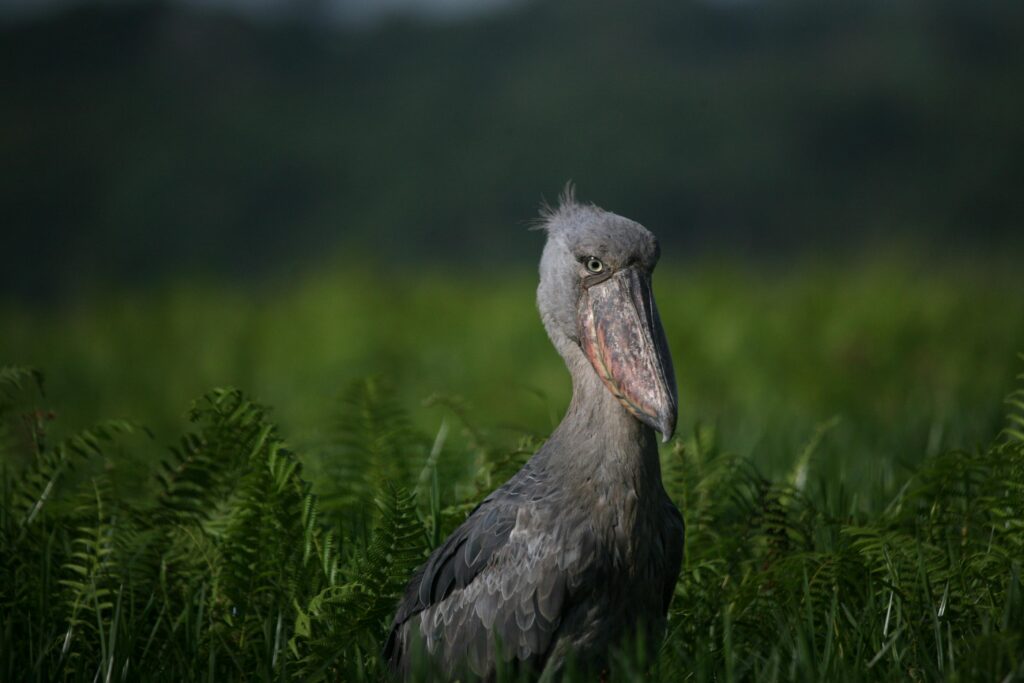
Marine Creatures
Now let’s dive into the chilling world of marine creatures and explore their eerie and captivating characteristics.
- The Anglerfish: This deep-sea dweller has an unusual adaptation to survive in the dark depths. It possesses a bioluminescent lure that dangles from its head, attracting unsuspecting prey. Once a meal is within range, the anglerfish extends its jaw, revealing rows of razor-sharp teeth, and quickly devours its unsuspecting victim.
- The Vampire Squid: Despite its name, this creature isn’t a true squid but possesses intriguing behaviors. It has the ability to turn its body inside out, displaying a web-like cloak that acts as a defense mechanism. Additionally, when threatened, it releases a cloud of bioluminescent mucus, confusing predators and allowing it to escape.
- The Giant Isopod: This deep-sea scavenger is known for its macabre feeding habits. It has adapted to survive in extreme conditions by consuming the carcasses of dead animals that sink to the ocean floor. Its large, armored body enables it to crush through tough decaying flesh, making it a formidable decomposer.
- The Bobbit Worm: This elusive creature lies hidden in the ocean sediment, waiting for unsuspecting prey to swim by. When the moment is right, it lunges out with its powerful jaws, snatching its victim and dragging it underground. Its behavior is reminiscent of a horror movie, earning it the nickname ‘the ocean’s nightmare.’
- The Deep-Sea Hatchetfish: Living in the depths of the ocean, this creature has adapted to the lack of light by possessing bioluminescent organs on its ventral side. By illuminating its belly, it effectively becomes invisible to predators swimming below, while still being able to detect prey swimming above.
These marine creatures showcase the unusual adaptations and intriguing behaviors that exist in the mysterious depths of the ocean. Their eerie and captivating characteristics remind us of the fascinating diversity that exists in the world’s oceans.
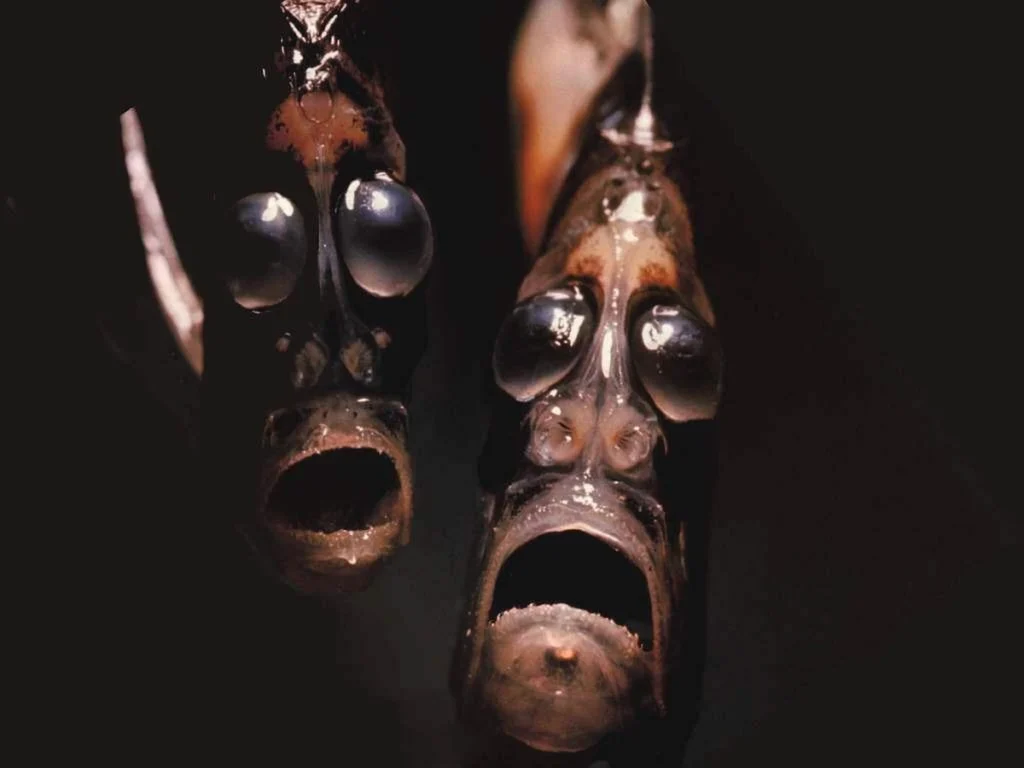
Miscellaneous
Let’s explore the intriguing and unsettling world of miscellaneous scary and creepy animals. In this category, we will delve into the differences in defense mechanisms among scary marine creatures and the bizarre adaptations for survival in creepy reptiles.
| Animal | Defense Mechanism/Adaptation |
|---|---|
| Electric Eel | Capable of generating 860 volts of electricity, it uses electrical shocks to defend itself and incapacitate prey. |
| Frilled Shark | With its unique frilled gills and over 300 triple-pointed teeth, this ancient shark species has evolved to be a formidable predator. |
| Yeti Crab | Found in hydrothermal vents at the deep-sea, this crustacean sports a hairy appearance that helps it blend in with its surroundings, providing camouflage against potential predators. |
| Satanic Leaf-Tailed Gecko | This gecko species mimics the look of decaying leaves with its horned head, red eyes, and tail with notches. Its camouflage allows it to hide from predators and silently hunt for insects. |
| Thorny Devil | Covered in spikes and scales, this small Australian lizard uses its thorny appearance as a defense mechanism. It can also change its skin color to match its surroundings, making it difficult to spot.
These miscellaneous scary and creepy animals showcase a wide range of defense mechanisms and adaptations that have allowed them to survive in their respective environments. From generating electricity to blending in with their surroundings, these creatures have developed unique and often eerie ways to protect themselves and secure their place in the natural world.
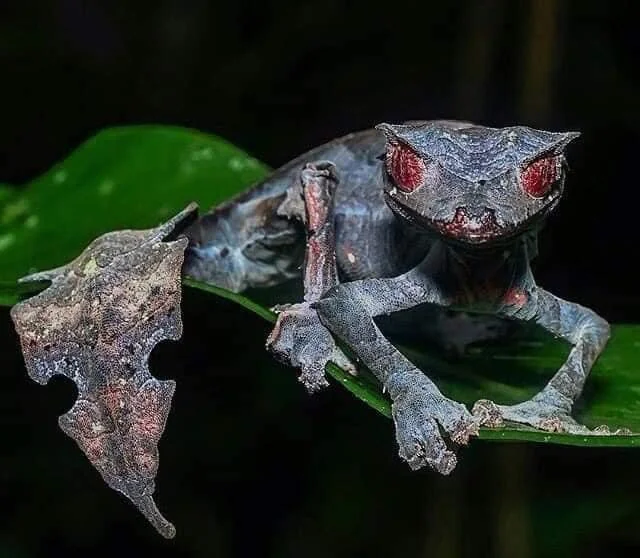
Frequently Asked Questions
The inland taipan, also known as the fierce snake, is often considered the scariest reptile in the world due to its aggressive behavior, potent venom, and ability to deliver the deadliest snakebite in the world, with a mortality rate of 100% if left untreated.
Are There Any Insects That Are Both Scary and Deadly?
Yes, there are insects that are both scary and deadly. Some insects have venomous bites that can be dangerous to humans. Their bites can cause severe pain, allergic reactions, and even death in some cases.
Which Fish Has the Most Terrifying Appearance?
The scariest fish, in terms of appearance, is the Fangtooth. With its large relative teeth, spooky appearance, and unique adaptation for survival in the deep sea, it is undeniably terrifying to look at.
Are There Any Primates With Creepy or Eerie Characteristics?
Some primates have unusual features and display strange and eerie behaviors. These characteristics make them fascinating subjects of study. From the aye-aye with its creepy skeletal appearance to the vampire ground finch with its unique feeding behavior, primates can be quite intriguing.

Erzsebet Frey (Eli Frey) is an ecologist and online entrepreneur with a Master of Science in Ecology from the University of Belgrade. Originally from Serbia, she has lived in Sri Lanka since 2017. Eli has worked internationally in countries like Oman, Brazil, Germany, and Sri Lanka. In 2018, she expanded into SEO and blogging, completing courses from UC Davis and Edinburgh. Eli has founded multiple websites focused on biology, ecology, environmental science, sustainable and simple living, and outdoor activities. She enjoys creating nature and simple living videos on YouTube and participates in speleology, diving, and hiking.

